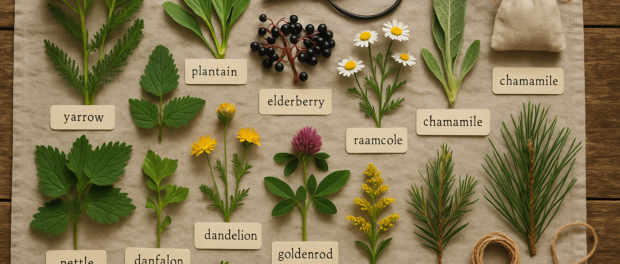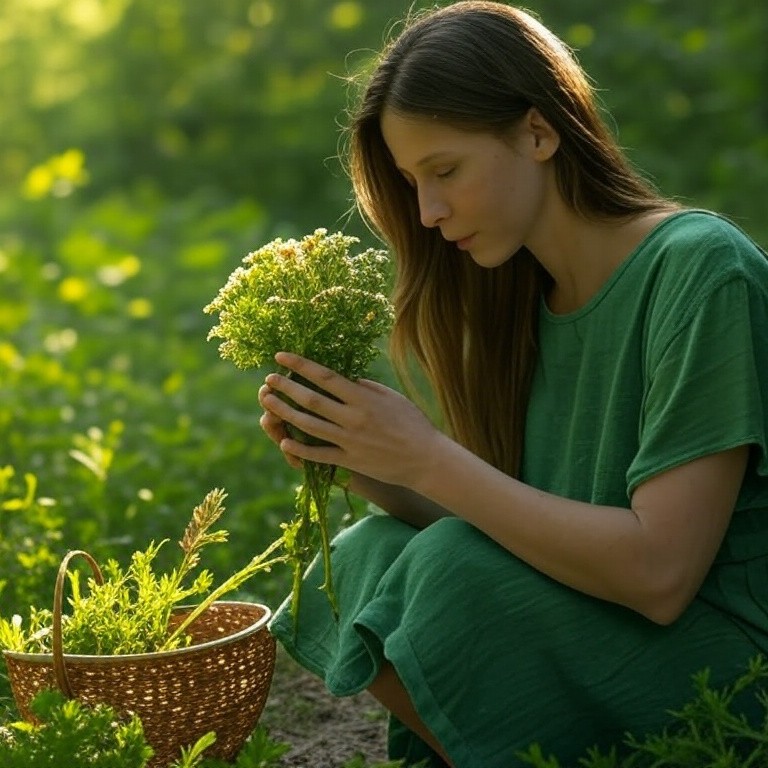10 Common Medicinal Plants to Forage – Rediscovering Nature’s Pharmacy

In a world of fast-paced pharmaceuticals and synthetic remedies, a quiet yet powerful movement is taking root; one that invites us to slow down, walk barefoot through the wild, and reconnect with the ancient wisdom of the earth. This movement is wild foraging for medicinal plants. For centuries, indigenous cultures and herbalists have relied on nature’s pharmacy, and now, more than ever, modern seekers are rediscovering the healing bounty growing freely beneath our feet.
What Is Wild Foraging?
Wild foraging is the practice of gathering edible and medicinal plants from their natural habitats. It’s an invitation to engage with the land on an intimate level; to see, touch, and learn from the ecosystems that sustain us. Unlike cultivated herbs, wild plants grow in their natural environment, often making them more potent, resilient, and energetically aligned with the Earth’s rhythms.
Foraging is more than just collecting. It’s a sacred act of reciprocity. When we walk with awareness, harvest with gratitude, and learn with humility, we open ourselves to the true medicine; connection.

Why Forage for Medicinal Plants?
- 🌱 Empowerment & Self-Reliance: Knowing how to identify and use medicinal plants fosters deep independence. It’s a skill that grounds you—body, mind, and spirit.
- 🌿 Sustainable Health: Many wild herbs offer effective remedies without the side effects of modern drugs. They support the body’s innate ability to heal.
- 🌼 Spiritual Connection: There’s something magical about gathering your own medicine. It’s a return to harmony with nature, a spiritual practice rooted in respect and reverence.
- 🌎 Environmental Awareness: Foraging deepens your understanding of local ecosystems and your role in preserving them.
Getting Started: The Golden Rules of Foraging
Before you run barefoot into the woods, a few important principles will ensure your foraging journey is ethical, safe, and successful:
- Correct Identification is Crucial
Use a trusted field guide or app. Many plants have toxic look-alikes, never harvest unless you’re 100% sure. - Harvest Responsibly
Take only what you need, never more than 10% of a plant population in one area. Leave enough for wildlife and regrowth. - Know Your Environment
Avoid areas sprayed with pesticides or near roadsides where pollutants accumulate. National forests, protected lands, and your own backyard are great places to start. - Gratitude & Permission
If you’re foraging on private land, always ask permission. And wherever you are, offer thanks—to the land, the plant, and the spirit of place.
10 Common Medicinal Plants to Forage (and How to Use Them)
1. Yarrow (Achillea millefolium)
Found in meadows and roadsides, yarrow is excellent for wound healing, fevers, and menstrual support. Use the flowers and leaves in salves or teas.
2. Plantain (Plantago major)
Often found in grassy lawns and trails. A true “first-aid” plant, it draws out toxins and soothes insect bites, stings, and minor cuts. Chew a leaf and apply directly or make an infused oil.
3. Elderberry (Sambucus nigra)
The dark berries boost immunity and are a favorite for cold and flu remedies. Cook the berries into syrup or tincture; never eat them raw.
4. Mullein (Verbascum thapsus)
This tall, fuzzy-leafed plant supports lung health and can ease coughs. The leaves can be dried for tea or smoked for respiratory relief.
5. Chamomile (Matricaria chamomilla)
Growing in sunny fields, this dainty flower calms anxiety, supports digestion, and promotes restful sleep. Harvest the blossoms for tea.
6. Nettle (Urtica dioica)
A nutrient-rich powerhouse. Wear gloves to harvest, then dry or cook to neutralize the sting. Excellent for joint health and seasonal allergies.
7. Dandelion (Taraxacum officinale)
Every part is useful, roots for liver health, leaves as a diuretic, flowers for antioxidant-rich wines or salves.
8. Red Clover (Trifolium pratense)
A blood purifier and hormone balancer. Use the blossoms in teas for skin health and detoxification.
9. Goldenrod (Solidago spp.)
Don’t confuse it with ragweed, goldenrod is anti-inflammatory and helps with allergies, UTIs, and joint pain. Use dried flowers in teas or tinctures.
10. Pine Needles (Various Pinus species)
Rich in vitamin C, pine needles make a citrusy, immune-boosting tea. They also have anti-inflammatory properties.

Crafting Your Own Remedies
Once harvested, your plant allies can be transformed into powerful home remedies:
- Teas & Infusions – Gentle and effective for daily use.
- Tinctures – Alcohol-based extracts for concentrated medicinal support.
- Salves & Balms – For topical healing and skin nourishment.
- Syrups & Honeys – Especially great for immune and respiratory health.
- Poultices – Crushed fresh plant material applied directly to skin issues.
Safety Considerations
- Always introduce new herbs slowly and observe how your body responds.
- Consult a qualified herbalist if you have existing health conditions or are taking medications.
- Some herbs are not safe during pregnancy or for children; research thoroughly or seek guidance.
The Spiritual Medicine of Foraging
Foraging is not just a physical act, it’s a spiritual homecoming. With every plant you learn, with every leaf you touch, you reclaim your place in the web of life. You become both student and steward, a quiet keeper of ancient knowledge passed down through wind, soil, and sun.
Final Thoughts: Reclaim Your Wild Wisdom
In a time when wellness is often boxed, bottled, and sold, wild foraging invites us to remember: healing is our birthright. Nature has never stopped offering her gifts; we’ve just forgotten how to receive them.
So, wander. Kneel. Taste. Touch. Give thanks.
Let your bare feet walk the wild path to wellness.



